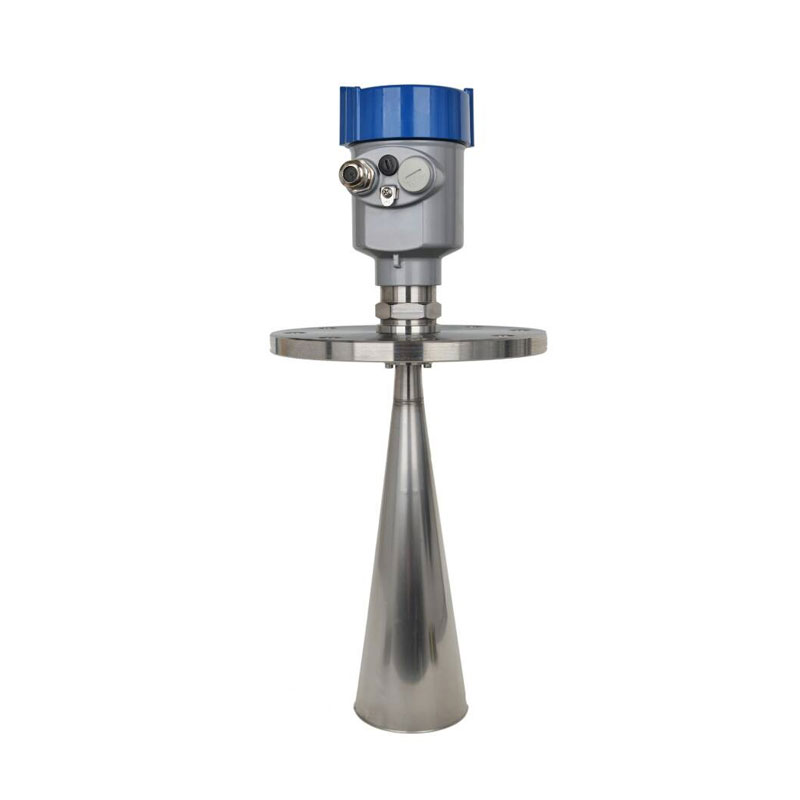Tianqiong Sensor IOT Technology Co., Ltd
Sales Manager:Ms. Emily Wang
Cel,Whatsapp,Wechat:+86 15898932201
Email:info@fengtutec.com
Add:No. 155 Optoelectronic Industry Accelerator, Gaoxin District, Weifang, Shandong, China

Sales Manager:Ms. Emily Wang
Cel,Whatsapp,Wechat:+86 15898932201
Email:info@fengtutec.com
Add:No. 155 Optoelectronic Industry Accelerator, Gaoxin District, Weifang, Shandong, China

Model:WW-26
Brand:tianqiong
1.Radar level meter product principle
Radar level meter is used for non-contact level measurement of liquids and bulk solids, and can be used in situations with solid materials, strong dust, easy crystallization, and condensation.The radar level antenna emits narrower microwave pulses and transmits them downwards through the antenna. After contacting the surface of the medium to be tested, the microwave is reflected back and received by the antenna system again. The signal is transmitted to the electronic circuit part and automatically converted into a level signal (because the microwave propagation speed is extremely fast, the time it takes for the electromagnetic wave to reach the target and return to the receiver through reflection is almost instantaneous).
2.Radar level meter technical parameters
Application: solid materials, strong dust, easy crystallization, condensation site
Measuring range: 30 meters
Process connection: Universal flange
Media temperature: -40~250℃
Process pressure: -0.1~0.1MPa
Accuracy: ±15mm
Protection level: IP67
Frequency range: 26GHz
Explosion-proof grade: Exia ⅡC T6 Ga/Exd ia IIC T6 Gb
Signal output: 4...20mA/HART (two wires/four wires), RS485/Mod bus
3. Radar level meter product features
The antenna is small in size and is easy to install; non-contact radar, no wear and pollution.
Almost not affected by corrosion and foam; almost not affected by changes in water vapor, temperature and pressure in the atmosphere.
Severe dust environments have little impact on the high-frequency level gauge operation.
Shorter wavelengths and better reflect on slanted solid surfaces.
The beam angle is small and the energy is concentrated, which enhances the echo capability while also helps avoid interference.
The measurement blind spot is smaller, and it will also achieve good results for small tank measurements.
High signal-to-noise ratio allows better performance even in fluctuations.
High frequency is the best choice for measuring solid and low dielectric constant.
Meteorological Instruments for Solar Energy is a professional device that integrates the monitoring functions of six key meteorological parameters: temperature, humidity, wind speed, wind direction, air pressure, and rainfall. Its core highlight lies in its highly integrated and ingenious design. It...
The mobility and dynamic changes of pollution sources have always been prominent challenges. The traditional model of manually tracing pollution sources and analyzing pollution characteristics not only consumes substantial time and human resources but also yields data lacking accuracy due to issues...
Water is the lifeblood of plant growth, permeating throughout their entire life cycle. Plants mainly rely on their roots to absorb water, and this water participates in numerous physiological activities within the plant.Photosynthesis is the core process of plant growth. Water and carbon dioxide und...
Portable Weather Station integrates meteorological monitoring with flexible mobile platforms, providing convenient and efficient meteorological data monitoring services for various scenarios.Designed to be compact and small in size, it is easy to install on special vehicles such as emergency rescue...